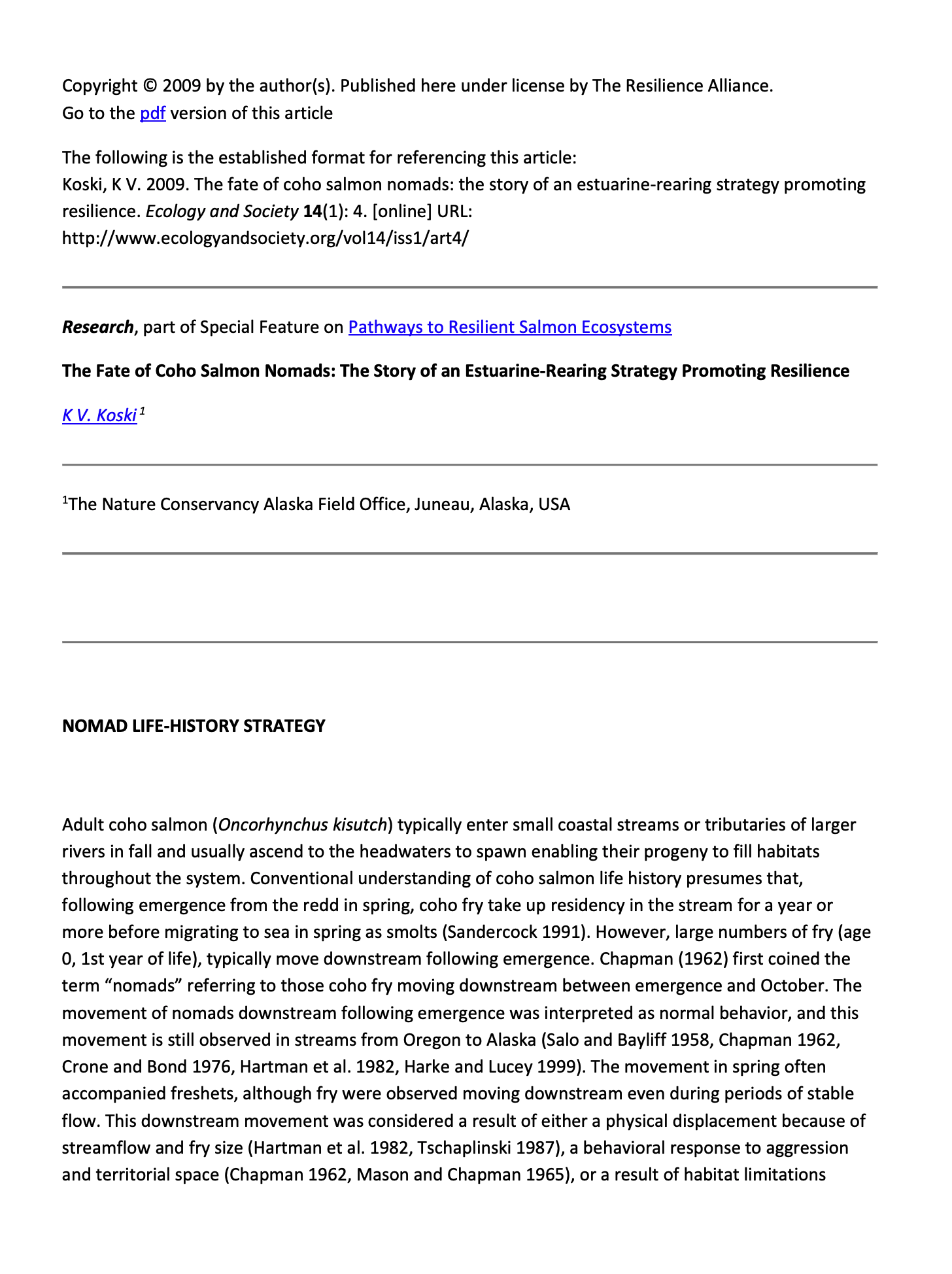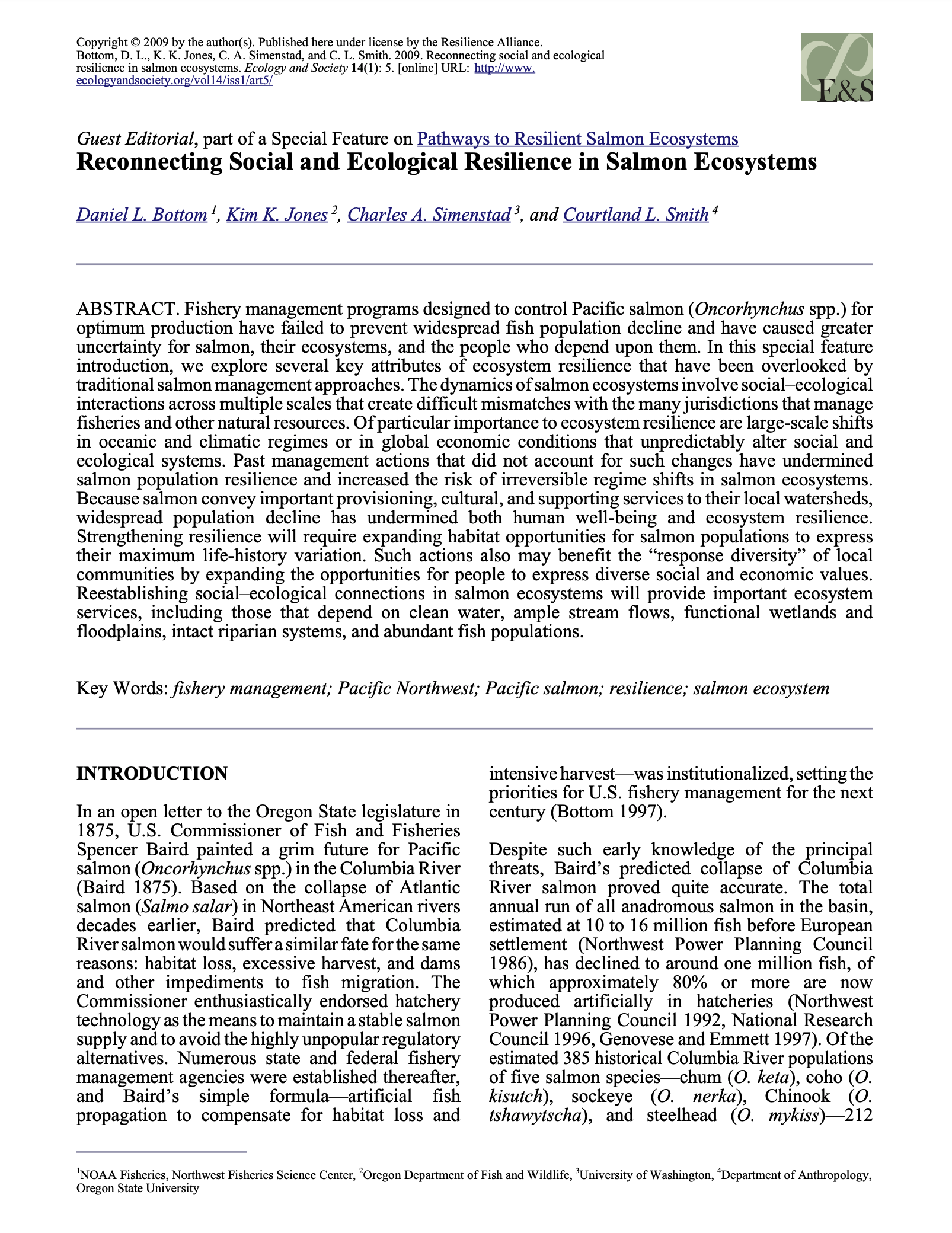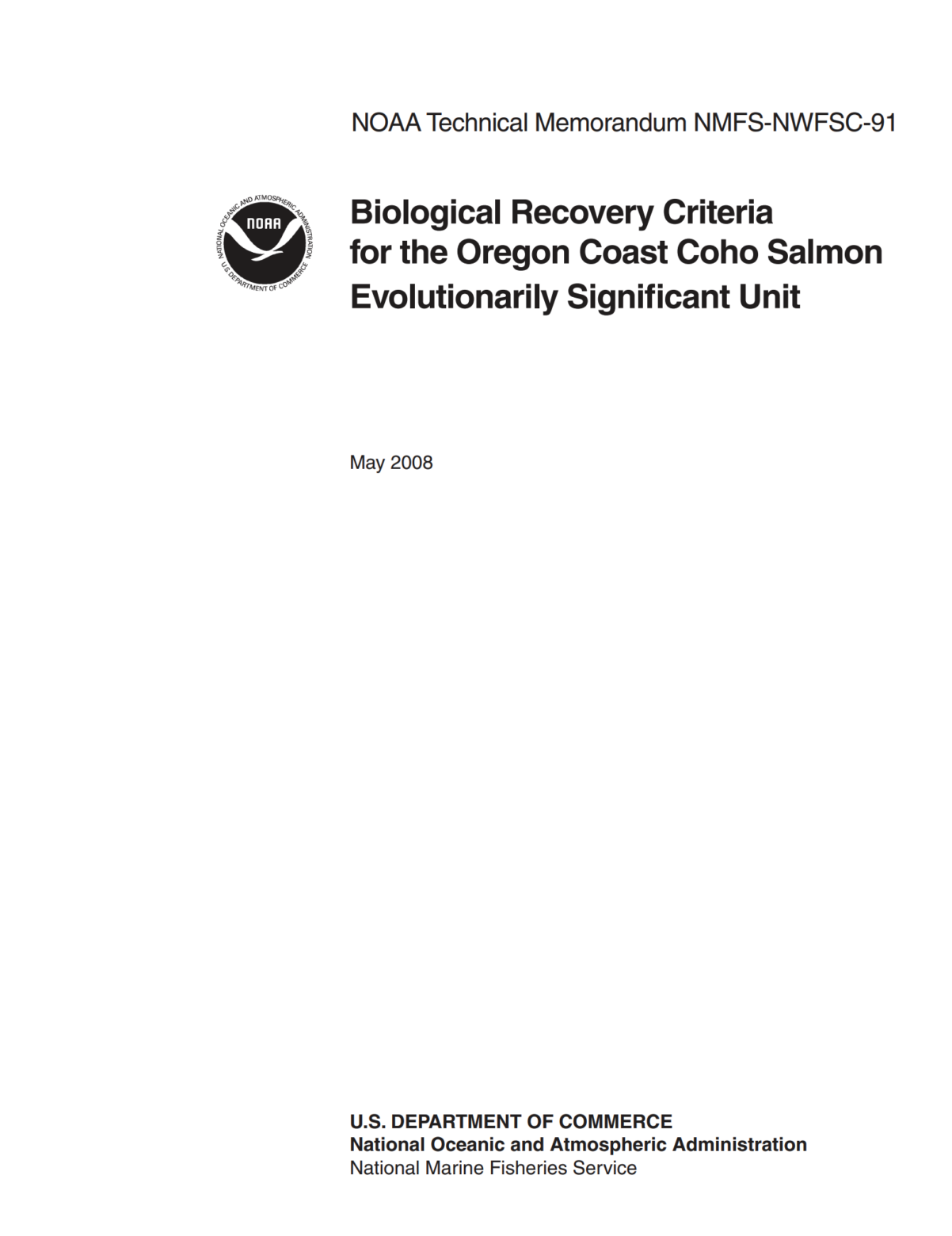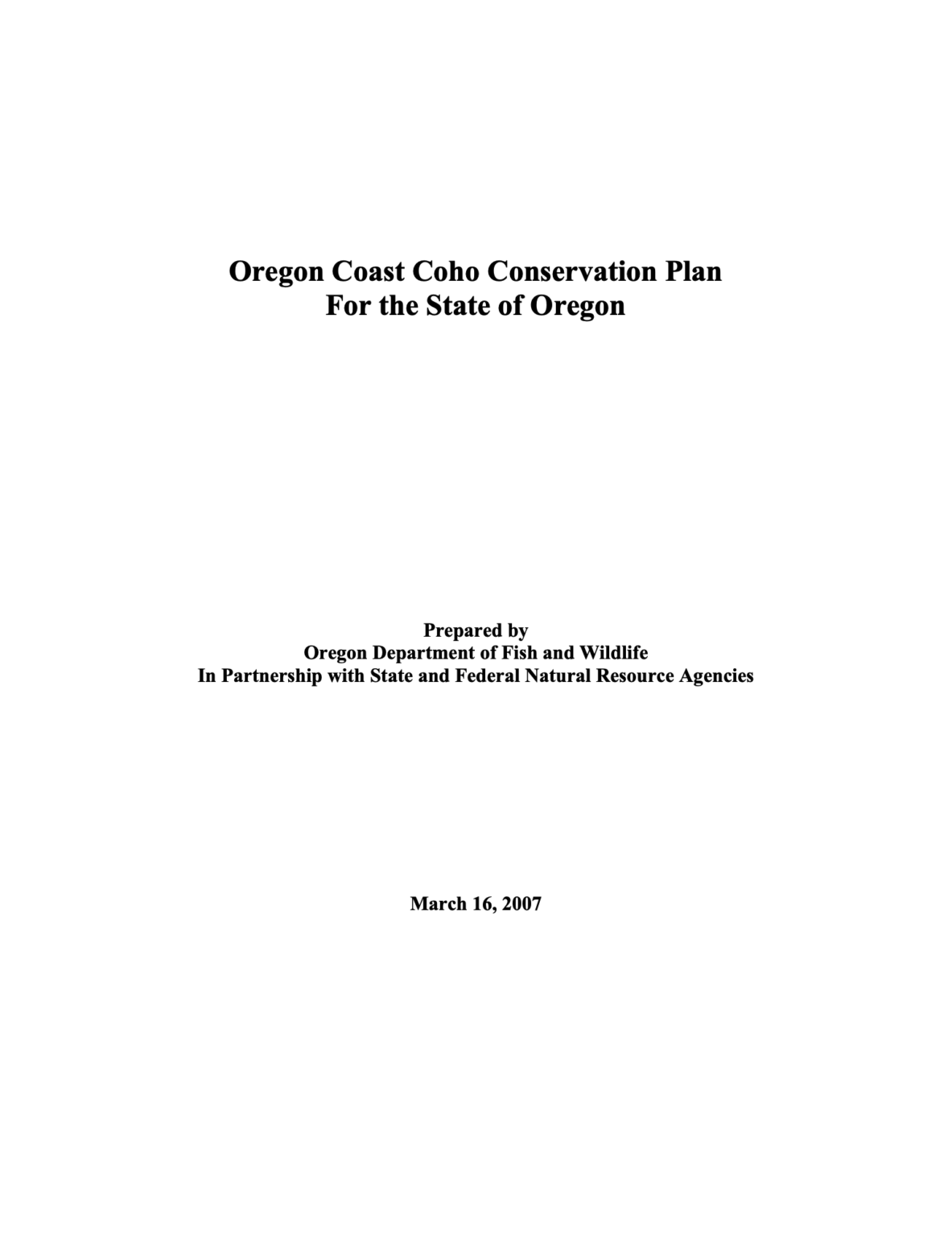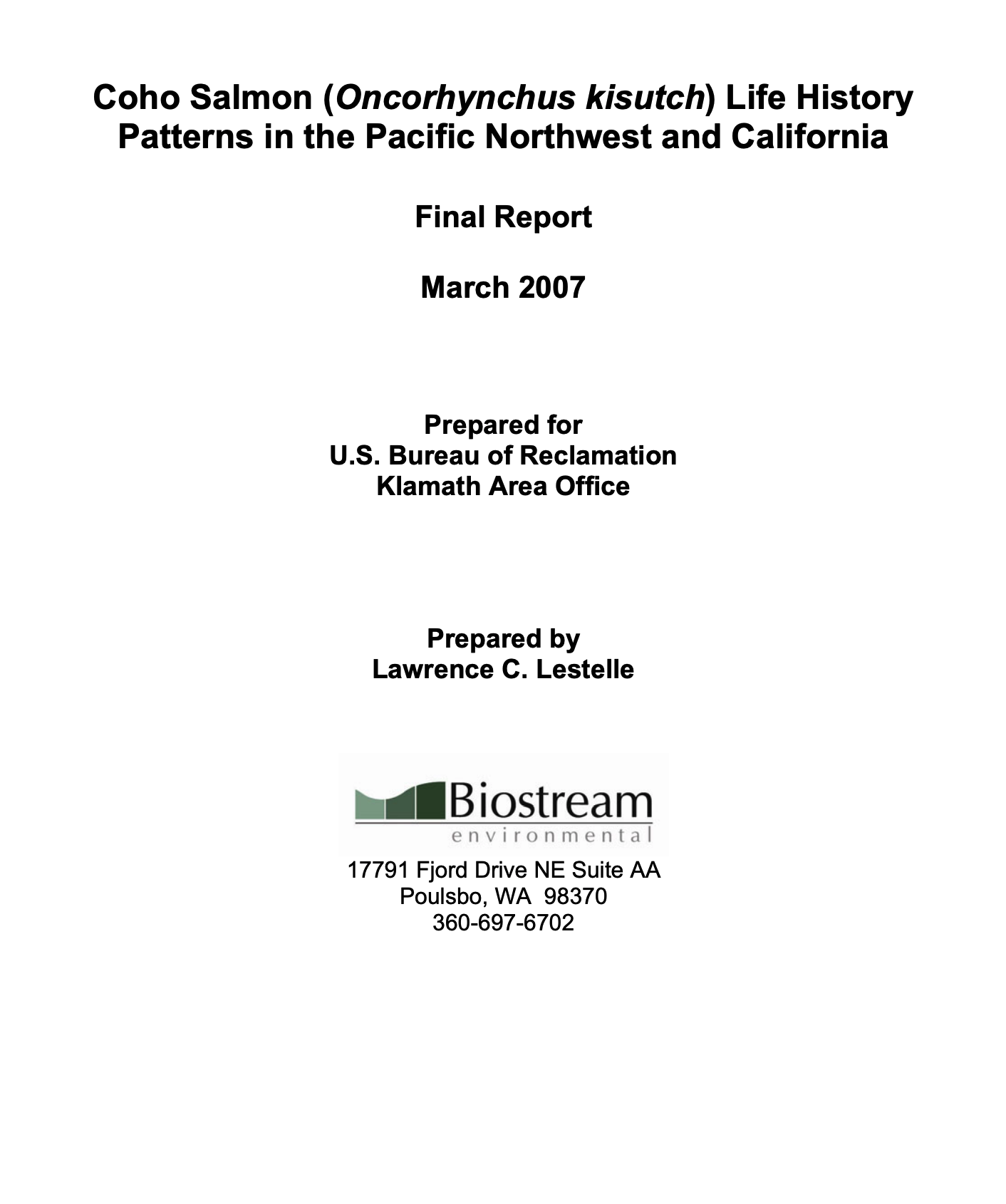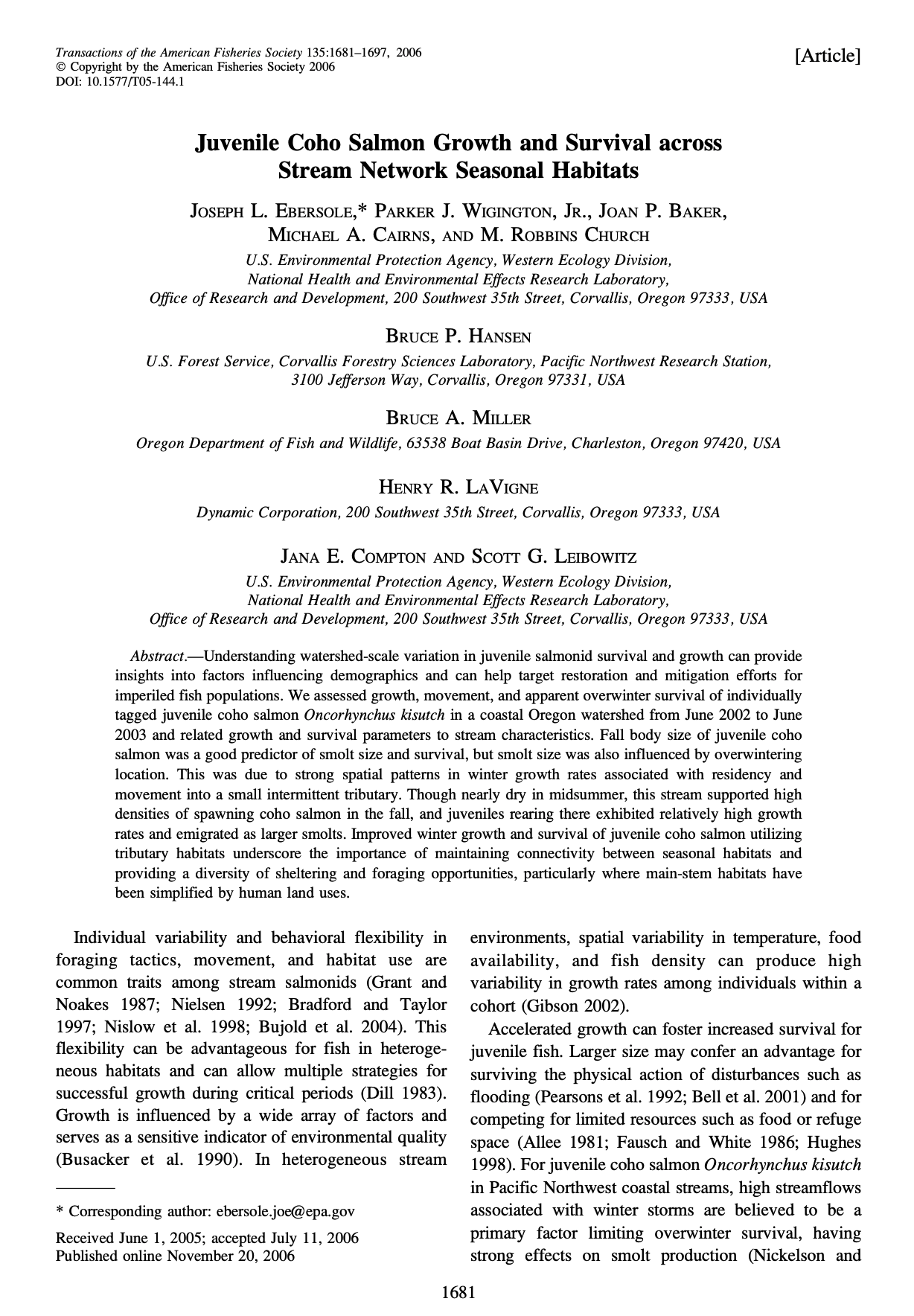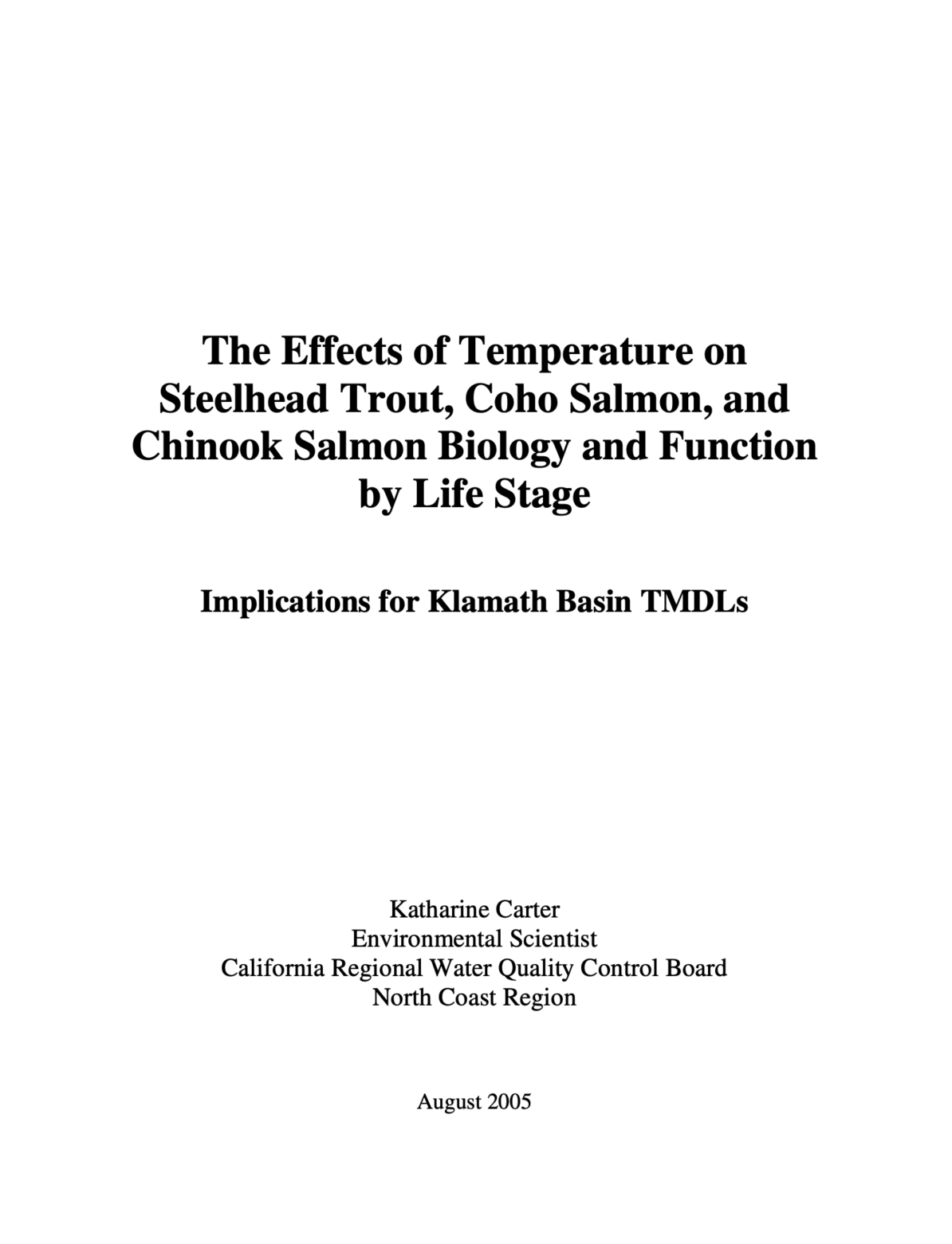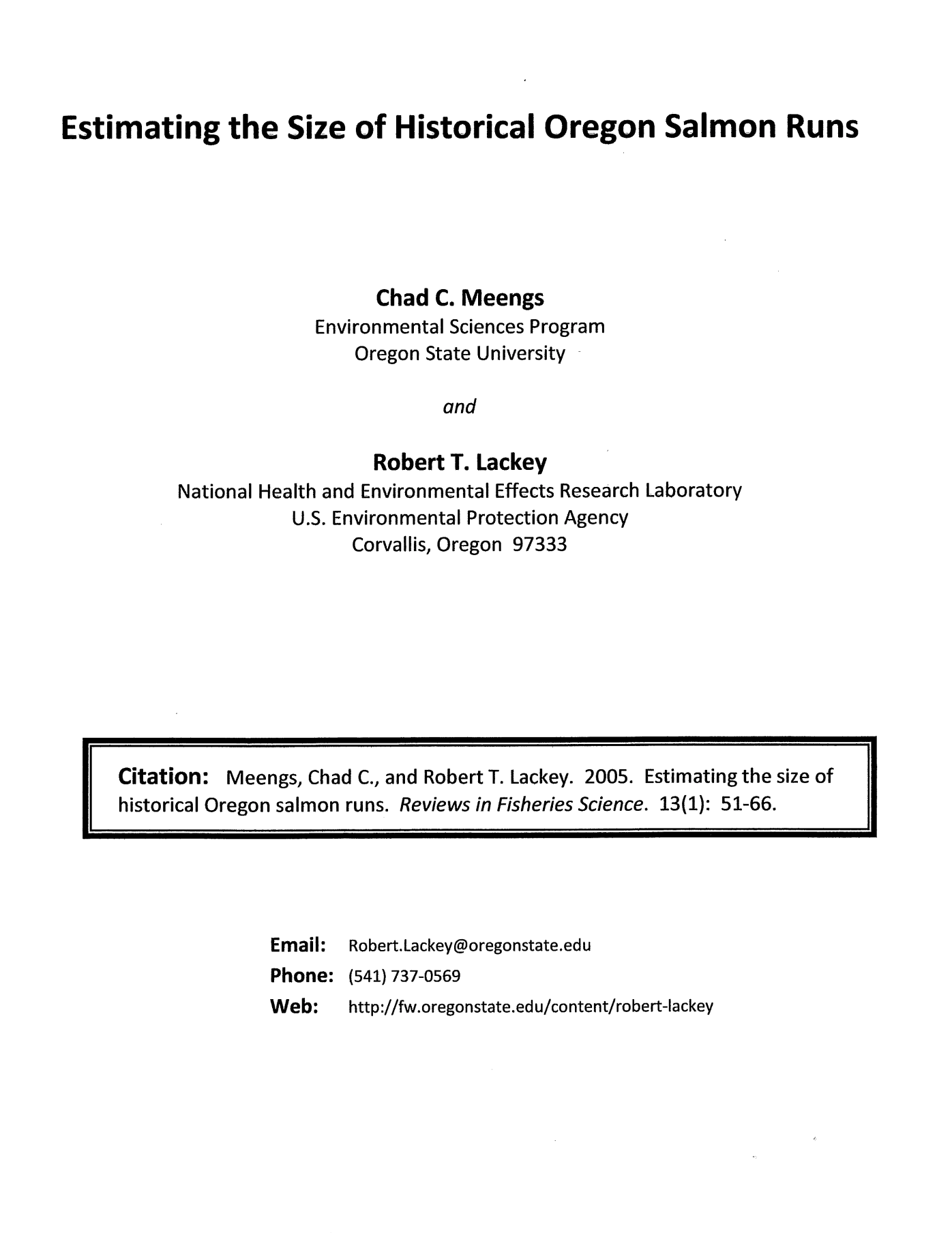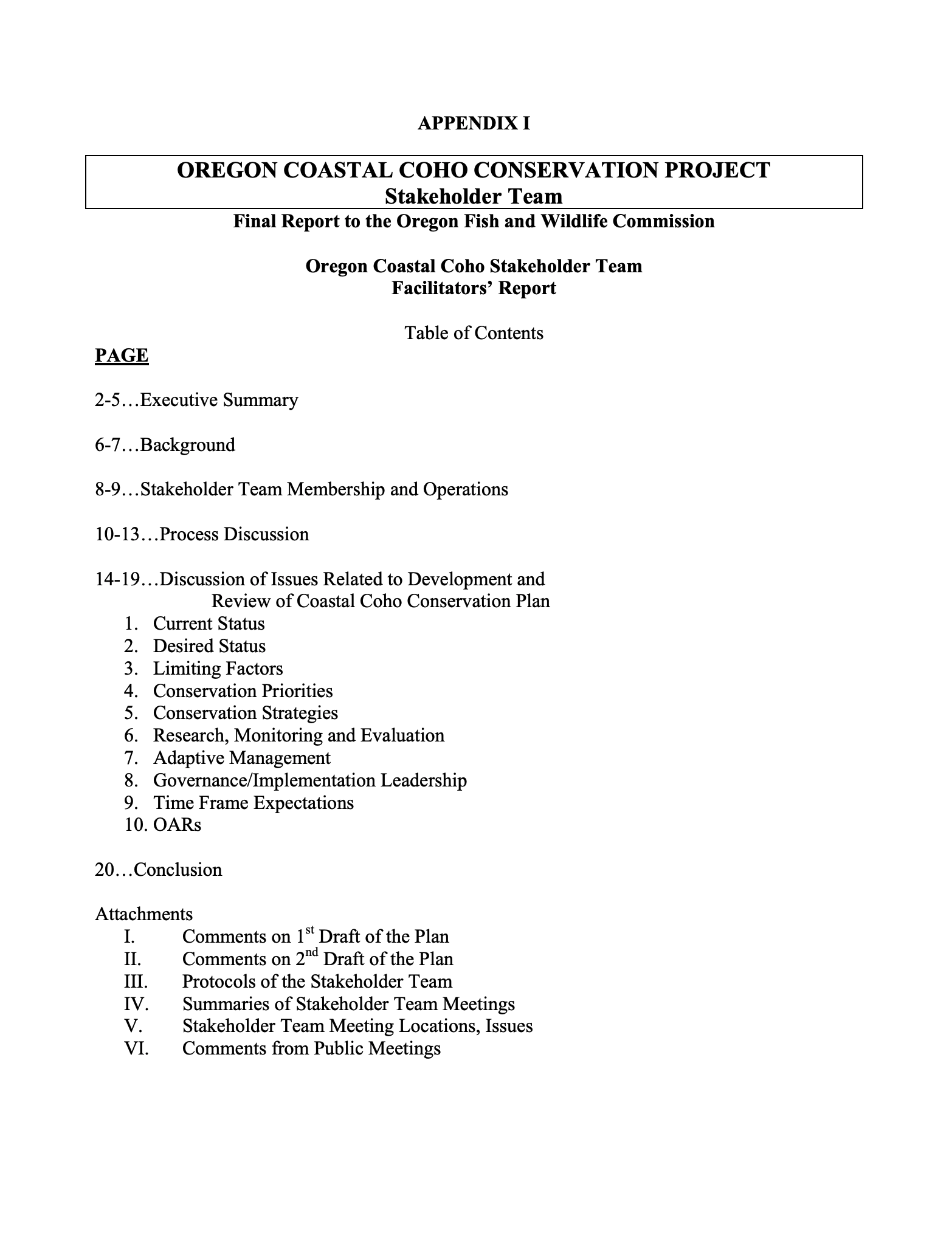Modeling of Summer Weight Abundance of Juvenile Coho Salmon Across a Stream Network (Ebersole, 2009)
admin2022-06-28T13:49:58+00:00Spatial variation in stream habitat quality can lead to network-level patterns in the survival and growth of juvenile coho salmon Oncorhynchus kisutch that provide important insights into the factors influencing the freshwater population dynamics of this species. Our objectives were to quantify the relationships among summer habitat conditions, coho salmon density, and coho salmon parr abundance and weight across an extensive stream network over 3 years. We used hierarchical linear models to assess the factors influencing coho salmon weight and abundance at the levels of individual fish (fork length and parasite burden), habitat unit (surface area, cover, and density), [...]


